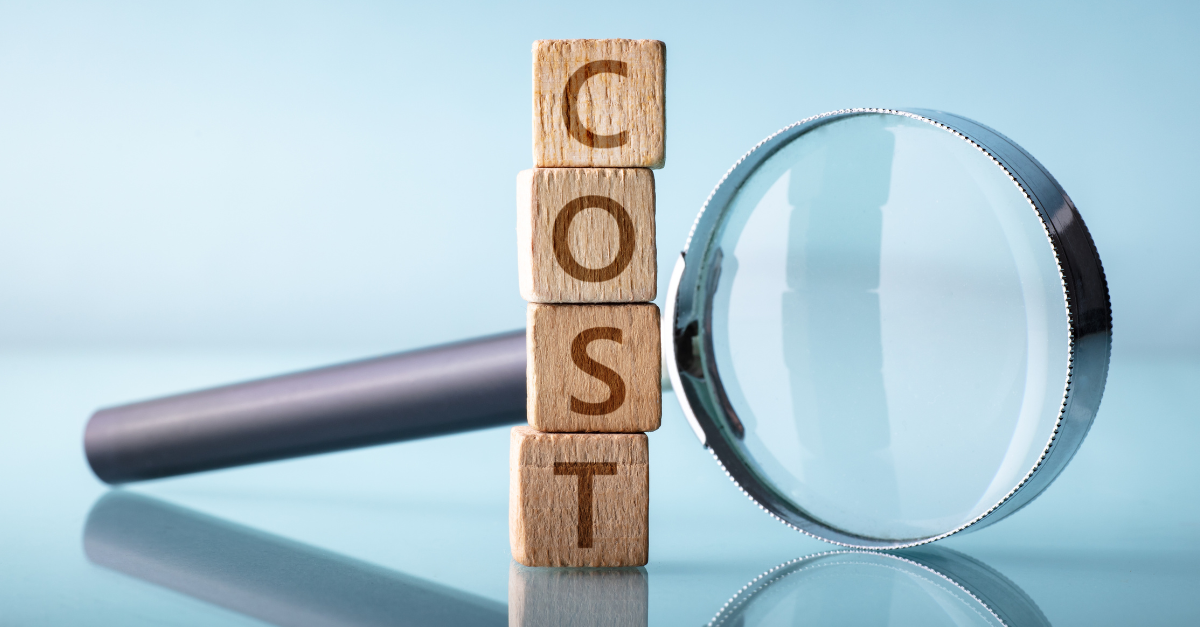- What is a Consumer Proposal?
- What are the advantages?
- Are you eligible to file a consumer proposal?
- How does the process work?
- Why are more people filing proposals in Canada?
What is a Consumer Proposal?
A consumer proposal is a legally binding debt settlement agreement that you and your consumer proposal administrator negotiate with your creditors. It is a way to make a deal with your creditors to repay your debts. You agree to repay less than the full amount owing, and your creditors agree to write off the rest of your debt.
Here’s a typical example: You owe $50,000 on various debts (credit cards, bank loans, lines of credit, payday loans, and income taxes). You have a job and are able to make some payments, but you can’t afford to repay everything in full, including interest. You contact a licensed insolvency trustee to file a consumer proposal. You agree to pay $400 per month for the next four years, or $19,200 in total. Each of your creditors votes on the proposal, and if they accept it you simply pay $400 per month for the next four years. At the end of the proposal your debts are eliminated.
Would a consumer proposal work for you? Contact a consumer proposal administrator today to arrange a no charge initial consultation.
What are the Advantages of Filing a Proposal?
There are 5 key advantages to filing a consumer proposal:
- Your monthly payments are affordable. Because you repay only a portion of what you owe, your payments are much lower than any other debt relief option including debt consolidation, credit counselling. Because they can be spread out over 5 years, your monthly payments are less than they would be in a bankruptcy.
- You get immediate creditor protection. Consumer proposals give you protection from your creditors. They can’t sue you or garnishee your wages. Once it’s accepted, they can’t change their mind: it’s a legally binding settlement.
- You keep your assets. In a bankruptcy you lose your tax refund, and certain assets (like RESPs and any contributions you made to your RRSP in the year before bankruptcy). Depending on where you live in Canada, you may also lose the equity in your house. With consumer proposals you keep all of your assets.
- Fewer duties than bankruptcy. For many people, consumer proposals are better than bankruptcy. If you file bankruptcy you are required to submit a monthly budget, with proof of your income, to your trustee each month.
- Payments are set at the beginning and don’t change. In a bankruptcy, the more you make, the more you are required to pay (it’s called surplus income). If you get a bonus, or a raise, or work overtime while bankrupt, you pay more. With consumer proposals your payment is fixed, and never increases, even if your income goes up. So, if you expect your income to increase, consumer proposals are better than bankruptcy.
A consumer proposal can help you eliminate your debt and gain control over your financial future. It can help you:
- eliminate your unsecured debts;
- reduce your monthly payments;
- stop collection calls;
- avoid bankruptcy;
- allow you to start saving for your future.
Is a proposal right for everyone?
While a consumer proposal is a great alternative to declaring bankruptcy, it is not for everyone. Filing a consumer proposal may not be an option if you do not have a steady or sufficient income to support your proposal payments. If you miss three proposal payments your proposal is annulled and your creditors can once again pursue you for your debts.
- If you have the money to pay off your debts in full, you should, because that will preserve your credit rating.
- If you have equity in your house and can qualify for a second mortgage, that may be the best solution for you.
- If you have low income and no assets, and a lot of debt, personal bankruptcy may be the correction solution.
However, for many Canadians consumer proposals are the correct solution.
To find out more, please arrange for a no charge initial consultation with a local trustee.
Are You Eligible to File a Consumer Proposal in Canada?
A consumer proposal was added to the Bankruptcy and Insolvency Act in Canada as a way to allow individual to make an offer to settle their debts with their creditors for less than they owe yet still receive the protection available under the Act.
To qualify to file a consumer proposal you must:
- Be an individual. Corporations cannot file under the consumer proposal provisions,
- Be insolvent. This means you cannot pay your debts as they come due and your debts are larger than your assets,
- Owe less than $250,000 (excluding your house mortgage). If you owe more than $250,000 you can still file a proposal to your creditors it is just called a Division I proposal,
- File a proposal through a Consumer Proposal Administrator, who is also a Licensed Bankruptcy Trustee,
- Not have a current uncompleted consumer proposal outstanding, and
- Have sufficient income to make your payments.
This last point is one more of practicality than law. For a consumer proposal to be accepted by your creditors your proposal terms will usually include monthly payments, although lump sum proposals are not unheard of. You will need to be able to show that you can meet those payments over the term of the proposal, usually between 3 and 5 years. Since your proposal will involve you making payments to deal with your debts, proposals are most successful if you have a job, or a stable source of income.
After filing your creditors will be able to file claims and vote in your proposal based on the value of those claims. If they accept your proposal and it is accepted by the Court, then you begin the process of making your payments and completing the terms of your agreement. If it is rejected, your Consumer Proposal Administrator will work with you to offer additional terms that your creditors may agree to or can help you choose other options including filing bankruptcy.
The consumer proposal administrators on our site have an excellent track record of negotiating successful proposal terms that work for both the debtor and the creditors.
What if my debts are over $250,000?
Individuals who owe more than $250,000, even when excluding their mortgage, can still make a proposal to their creditors. Under these circumstances they may qualify to file a Division I Proposal. The impact is largely the same, it is just the procedures that differ. A bankruptcy trustee can help you determine whether you would be eligible to file a consumer or division I proposal.
Can I file a joint consumer proposal with my spouse?
It is not uncommon for two people (a husband and wife for example) to have shared debts. In these circumstances it is possible for both individual to file something called a Joint Consumer Proposal. If they do, their total combined unsecured debts cannot exceed $500,000.
If I am already bankrupt can I file a consumer proposal?
If your financial circumstances change, it is possible to file a consumer proposal while you are bankrupt. You may be eligible for this option if for example your income suddenly increases and you not find yourself qualifying to pay substantial monthly surplus income payments. You may decide you want to lower your monthly payments and can make a proposal to your creditors to pay them less per month over a longer period of time. If this happens, your bankruptcy trustee can work with you do consider what is best for you and acceptable to your creditors.
How Does The Consumer Proposal Process Work?
A Consumer Proposal is a structured debt settlement offer to all your creditors to repay a portion of your debt. The amount to be repaid depends on factors such as how much debt you have, the value of any assets you possess, and who your creditors are. Since a consumer proposal is a formal agreement between you and your unsecured creditors, you must make an offer that will be acceptable to both parties.
A proposal can also only be filed through a Licensed Insolvency Trustee who is acting as a Consumer Proposal Administrator. Your proposal administrator can help you determine what would be a successful offer that you can afford.
The steps to filing a proposal under the Bankruptcy and Insolvency Act are fairly easy:
- Contact a Trustee to find out if you qualify to file a proposal and to see if that is your best option.
- Determine your payment terms. Your trustee will work with you to review your debts, your budget and your assets to assess why type of settlement you could propose to your creditors.
- Your trustee will then file your debt proposal documents. This provides a stay of proceedings which stops all creditor action pending approval.
- You creditors then have 45 days to vote whether to accept, or reject, your proposal. If the majority of your creditors, defined as 50% +1 of the dollar value of all claims, accept your proposal terms, it is approved. If 25% or more of your creditors reject your proposal a creditors meeting is automatically called to review the proposal. At that meeting you could explain your terms further, offer to pay more or you could allow the proposal to be rejected. They may request additional payment terms or conditions however your trustee will help you negotiate a fair deal.
- Once accepted, there is a 15 day waiting period to obtain court approval of your proposal. Creditors can apply to the court if they are unhappy with the terms during this period although this is very rare.
- Officially, if accepted, your proposal begins 60 days (45 + 15 days) afer you initially filed and your consumer proposal payments will begin according to the terms of your deal.
- Once all your payments are completed, and you have attended two mandatory credit counselling sessions, you will receive your Certificate of Completion and your debts will be discharged (eliminated).
What Debts Can I Include in My Proposal?
A consumer proposal includes your unsecured debts, such as credit cards, bank loans, payday loans, finance company loans, and even income taxes and other Canada Revenue Agency debts. Proposals do not discharge your secured debts (like your house mortgage or car loan).
Why are the number of consumer proposals increasing?
In Canada in 2017 more than 122,000 people filed a consumer proposal. More than one-half of all insolvencies are now proposals. Clearl, more Canadians are choosing to make a proposal to their creditors as an alternative to bankruptcy.
One reason for this change is that bankruptcy rules were changed in 2009 to make filing bankruptcy in Canada more costly for some people.
For example, if you file bankruptcy and your income is higher than the limit set by the government, you are required to pay a surplus income penalty in bankruptcy. You can read more about that in our article on what a consumer proposal costs.
By filing a consumer proposal, your monthly payment may be lower, and you know exactly what you are required to pay, which accounts in part for the increase in consumer proposal filings in Canada.
Another reason is rising housing prices in many Canadian cities. You may have equity in your home but if you have more debt than you can repay, or cannot qualify for a debt consolidation loan, a proposal is a way to access that equity, keep your home and eliminate your debt.
Book a free consultation today with one of our Licensed Insolvency Trustees.
What is a Consumer Proposal Administrator?

To file a consumer proposal, you must do so through a Consumer Proposal Administrator, who is also a Licensed Insolvency Trustee. No-one else can file a formal consumer proposal in Canada. A consumer proposal is a legal debt settlement option... Read more »
Consumer Proposal vs Bankruptcy

Most people don’t want to go bankrupt. For that very reason they are often reluctant to contact a bankruptcy trustee. However a consumer proposal is a great alternative to bankruptcy. It provides you with the same creditor protection and the... Read more »
What is the Cost of Filing a Consumer Proposal?

Proposals can result in debt repayment for as low as 30% of the original amount owing. Your monthly payments are determined based on what you negotiate with your creditors. There are three factors that affect the deal you can reach: Your... Read more »

